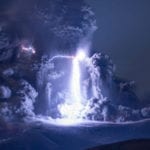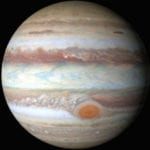 Technology
Technology  Technology
Technology  Humans
Humans 10 Everyday Human Behaviors That Are Actually Survival Instincts
 Animals
Animals 10 Animals That Humiliated and Harmed Historical Leaders
 History
History 10 Most Influential Protests in Modern History
 Creepy
Creepy 10 More Representations of Death from Myth, Legend, and Folktale
 Technology
Technology 10 Scientific Breakthroughs of 2025 That’ll Change Everything
 Our World
Our World 10 Ways Icelandic Culture Makes Other Countries Look Boring
 Misconceptions
Misconceptions 10 Common Misconceptions About the Victorian Era
 Mysteries
Mysteries 10 Strange Unexplained Mysteries of 2025
 Miscellaneous
Miscellaneous 10 of History’s Most Bell-Ringing Finishing Moves
 Technology
Technology Top 10 Everyday Tech Buzzwords That Hide a Darker Past
 Humans
Humans 10 Everyday Human Behaviors That Are Actually Survival Instincts
 Animals
Animals 10 Animals That Humiliated and Harmed Historical Leaders
Who's Behind Listverse?

Jamie Frater
Head Editor
Jamie founded Listverse due to an insatiable desire to share fascinating, obscure, and bizarre facts. He has been a guest speaker on numerous national radio and television stations and is a five time published author.
More About Us History
History 10 Most Influential Protests in Modern History
 Creepy
Creepy 10 More Representations of Death from Myth, Legend, and Folktale
 Technology
Technology 10 Scientific Breakthroughs of 2025 That’ll Change Everything
 Our World
Our World 10 Ways Icelandic Culture Makes Other Countries Look Boring
 Misconceptions
Misconceptions 10 Common Misconceptions About the Victorian Era
 Mysteries
Mysteries 10 Strange Unexplained Mysteries of 2025
 Miscellaneous
Miscellaneous 10 of History’s Most Bell-Ringing Finishing Moves
10 Amazing Astronomical Events Caught On Camera
As mankind points more and more of our technology toward outer space, we’re getting the chance to see amazing astronomical events for the first time. Some are sought after, some are expected and planned, but most are surprises—things we see simply because we were looking in the right place at the right time. Here are 10 recent examples of amazing astronomical events caught on camera.
10Messier 82 Supernova Explosion
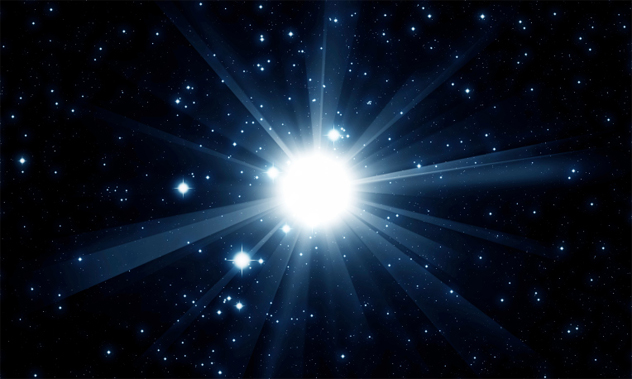
Messier 82 is a cigar-shaped galaxy in Ursa Major located about 11 million light-years away from us. On January 21, 2014, the first young supernova visible from Earth in 27 years was spotted by some astronomy students in London. The students snapped some photos of Messier 82, compared it to previous photos, and noticed a new, bright star in the familiar galaxy—they had found supernova 2014J. New supernovas (in visible wavelengths) are rare astronomical objects; this is the closest bright, young supernova to be discovered since 1987, when supernova 1987A burst into view.
Astronomers had hoped that this supernova would continue to brighten until it could be seen with binoculars, perhaps even with the naked eye, but within weeks the light had already begun to dim—meaning that, unfortunately, supernova 2014J will not become a new visible night star. But if you don’t get to see this year’s supernova, just wait. Astronomers are very confident that a star in our own galaxy will go supernova sometime in the next 50 years. Unfortunately, they also estimate that this supernova only has a 20 percent chance of being visible with the naked eye.
Train your eyes to the skies and discover the incredible mysteries of the cosmos with NightWatch: A Practical Guide to Viewing the Universe at Amazon.com!
9Solar Tornado Captured On The Sun’s Surface
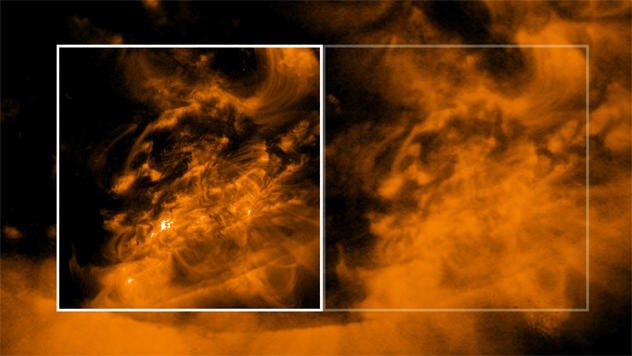
The Solar Dynamics Observatory (SDO) has been sending back beautiful and fascinating high-definition color video of our Sun for two years. Over a 30-hour period on February 7–8, 2012, it recorded something unusual and never before seen: a solar tornado on the surface of the Sun. But unlike tornadoes on Earth, which are formed and driven by the wind, solar tornadoes are created and driven by magnetism.
These solar tornadoes are created on magnetic fields with points anchored to the Sun’s surface at either pole. At one end of the magnetic field, a blast of plasma (superheated gas) shoots from the Sun and then spirals along to the other end, creating a tornado-like whirlwind. These planet-sized magnetic fields swirl and twist the plasma into the well-known corkscrew shapes of a Kansas tornado—only these tornadoes aren’t in Kansas, Toto.
8The Little Comet That Couldn’t
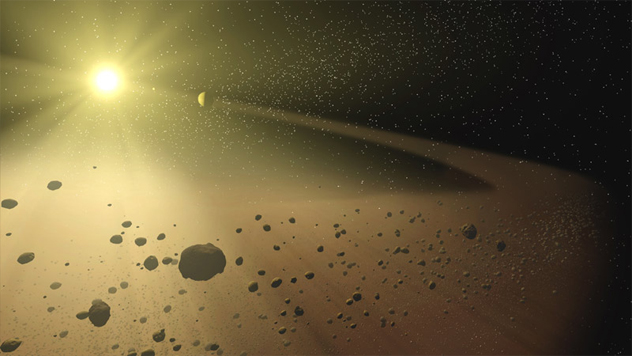
Comets are the space wanderers of our solar system, coming from way out beyond the planetary boundary of Neptune and Pluto in what is called the Oort cloud. From there they travel in toward the Sun, then loop back out again in giant, elliptical orbits. The Oort cloud contains trillions of icy bodies—potential comets, if they could just manage to make their way toward the Sun.
One such comet came toward the Sun in August 2013. Perhaps it had come and gone hundreds, maybe thousands of times before, safely entering our solar system, sailing around the Sun, and then shooting back out into the Oort cloud. This time, however, it made a kamikaze death plunge directly into the Sun. Normally such an event would never have even been noticed by astronomers, but this event just happened to be captured by the Solar and Heliospheric Observatory (SOHO) spacecraft, which watches the Sun, its corona, and solar wind. The SOHO filmed the comet coming in toward the Sun, never to leave again.
7Martian Solar Eclipse
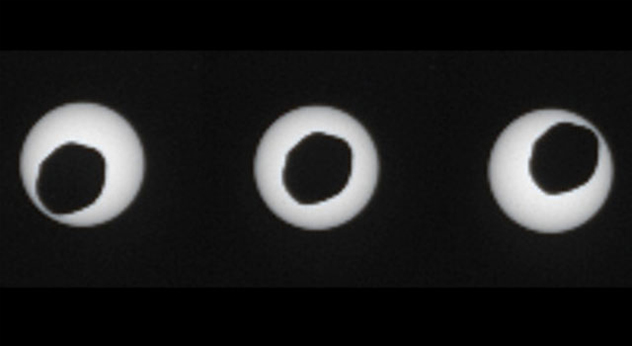
A solar eclipse on Earth is one of nature’s most spectacular extravaganzas. For a few minutes, the Moon passes in front of the Sun, obscuring all but a portion of it and sending the surrounding area into darkness during the day. It’s one of the few events that gives observers a brief chance to see the outer corona of the Sun. A solar eclipse can be viewed from the surface of other planets, too, as long as they have moons.
But until August 2013, man had never seen a solar eclipse from another world. That changed when the Mars Curiosity rover pointed its camera into the Martian sky and for the first time witnessed the larger of the two Martian moons, Phobos, passing in front of the Sun. Just like on Earth, the sky noticeably darkened as the moon blocked the sunlight. Pictures taken by the Mars rover show Phobos passing in front of the Sun, but the little moon does not block all of the Sun’s surface, so the solar eclipse does not appear as it would on Earth. But in its own way, it is just as beautiful.
6Watch An Asteroid Rotate As It Passes Earth
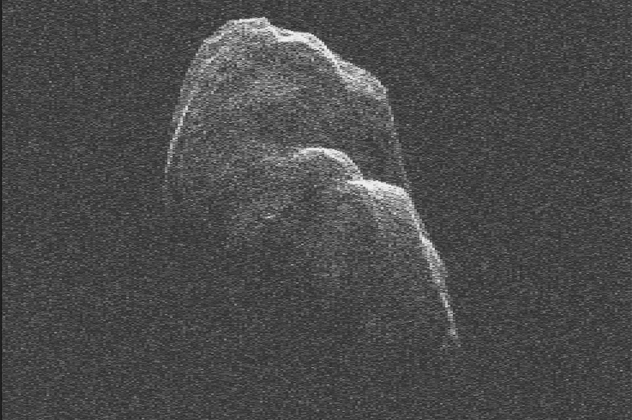
Near Earth Objects (NEO) are comets and asteroids that pass close to the Earth on regular orbits. These objects are fascinating to scientists because they may be composed of some of the earliest building blocks of the universe. They can also end all life on Earth if their orbit causes them to collide with our planet. Therefore, these objects are receiving more and more scientific scrutiny to try to find them and catalog their orbits.
In 2012, asteroid 4179 Toutatis came tumbling past Earth. Toutatis, a chunk of iron five kilometers (3 mi) wide, was named by its discoverers after a Celtic god from a comic book series. In fairness to the discoverers of Toutatis, the name did conform to the rules. In any event, the NASA Deep Space Network took radar images while the asteroid was 6.4 million kilometers (4 million mi) away. To put that into perspective, that’s about 18 Earth-to-Moon distances.
Toutatis is large enough to destroy life on Earth should it impact our planet. It completes an orbit every four years, so it has plenty of chances to nail us. Fortunately, astronomers know its orbit well and can assure us that Toutatis will not hit the Earth for at least the next 400 years. Its next close encounter with Earth is 2069.
Did you know that the majority of asteroids are discovered by amateurs? Make your mark on history with a Celestron 127EQ PowerSeeker Telescope at Amazon.com!
5Moonrise On Mars
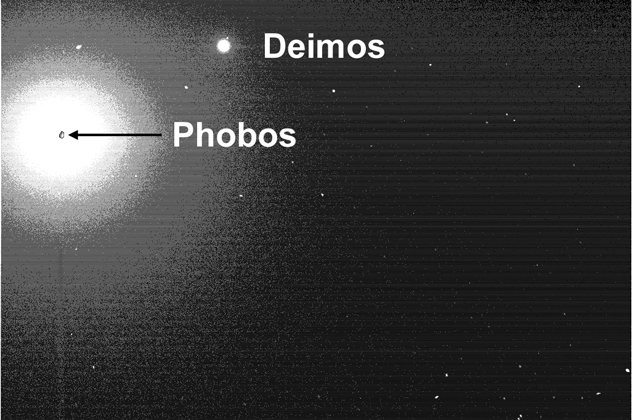
Man has been watching the Moon rise since the dawn of civilization. But our vantage point has always been here, on Earth. With our technology now, we can see moons rise on other worlds. On June 28, 2013, the Mars Curiosity Rover did just that, capturing the Martian moon Phobos rising above the horizon into the Martian sky. The video shows 27 minutes of the Martian moonrise condensed into 30 seconds. On the video, the halo you see in the sky is an anomaly created by the camera lens. The moonrise is not as spectacular on Mars given that Phobos is very small in comparison to our Moon, but it’s still amazing to see something that no human has ever witnessed.
If man ever colonizes Mars, they will see not just one but two moons rise above Mars (though Mars’s second moon, Demos, is even smaller). But it will be some time before any human gets to see a Martian moonrise. NASA is hoping to send humans to Mars by the year 2035, but even that far-off date is still very uncertain. There is a more ambitious project called Mars One that hopes to get humans to Mars by the year 2023, but there’s one catch—those who make it aren’t coming back. The Mars One mission is a one-way ticket. Still, this hasn’t stopped tens of thousands of Earthlings from signing up to make the trip.
4Photobombing Frog
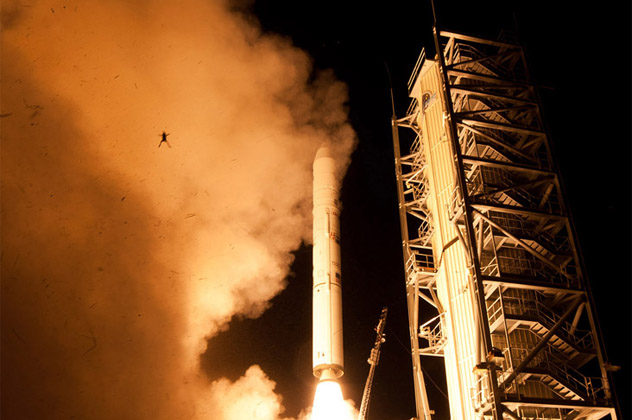
This wasn’t a Photoshop prank—it was in fact an image of a frog jumping into the field of view of a remotely tripped camera as a rocket launched from Wallops Island, Virginia. Considering that rocket launches are nothing more than controlled explosions, this frog gave a whole new meaning to the word “photobomb.” To assure the public that this was a photo of an actual frog, NASA actually issued a press release about it. NASA scientists figure that the frog was hanging out in one of the puddles of water surrounding the launch pad. The water was instantly turned into steam by the heat of the rocket engines, causing the frog to make a photogenic leap to safety.
The spacecraft in the picture, the Lunar Atmosphere and Dust Environment Explorer (LADEE), was launched from the Wallops Island, Virginia space facility and made a spectacular sight for viewers along the East Coast of the USA in September 2013. At the completion of its mission to study conditions in the atmosphere of the Moon, NASA intentionally crashed the spacecraft into the Moon.
3Eclipse Seen From Space
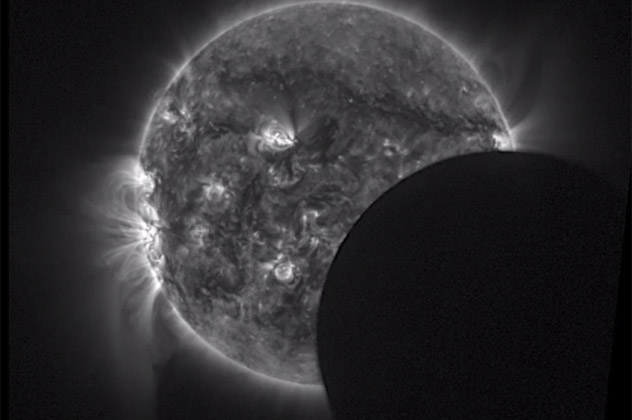
On April 29, 2014, there was a partial solar eclipse visible from some of the most remote parts of our planet. A few lucky people, such as those living in Indonesia and Tasmania, got to witness one of nature’s greatest displays—a “Ring of Fire” annular solar eclipse. Unfortunately, you would have had to travel to a small part of Antarctica to see it in all its glory.
An even better vantage point was available to the European Space Agency Proba-2 spacecraft, which captured images of the eclipse not once, but four times. With the images the spacecraft captured, you can watch the Moon and the Sun doing their cosmic dance. Each time, a different part of the Sun is eclipsed as the Moon passes in front as seen from the spacecraft. You won’t have to travel to Antarctica to see the next partial solar eclipse of 2014. Most of Canada and the United States will get to see this eclipse on October 23, 2014.
2Earth From Mars And Saturn
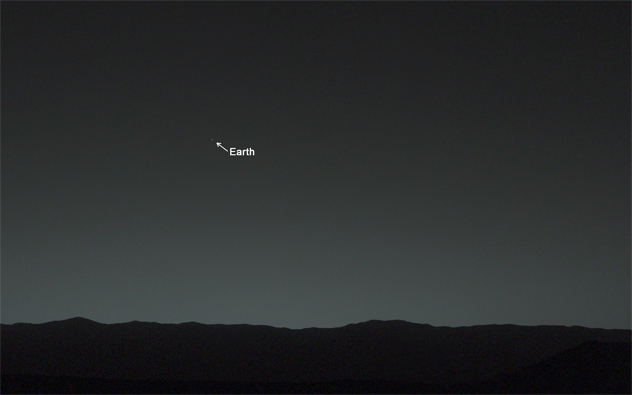
About an hour after sunset on January 31, 2014, the Mars Curiosity rover looked up and spotted the Earth and our Moon. Just like Mars appears to be red when we view it from Earth, the Earth appears as a pale blue dot when seen from the surface of Mars. Slightly magnified, our Moon is also visible orbiting our planet. The Earth was 159 million kilometers (99 million mi) from Mars when the photo was taken.
Not to be outdone, on July 19, 2013, the Cassini spacecraft, while orbiting Saturn, turned its camera back toward the center of our solar system and snapped a photo of Earth from the other side of space. The spacecraft took advantage of the shadow of Saturn to block the Sun’s rays in order to get the amazing photos which were then spliced into a mosaic of the entire planet, its ring system, its moons, and its planetary neighbors.
The camera was able to spot not just Earth but also Mars and Venus at various locations around the rings. This was the first time the people of Earth were told in advance that their pictures were to be taken from space. NASA asked the inhabitants of Earth to look to Saturn in the sky and smile for the picture. You can see Earth (and just to the lower right of Earth, our Moon) as the pale blue dot located between the E ring and the very faint G ring of Saturn in the lower right-hand side of the photo in the above link.
1Birth Of A New Moon
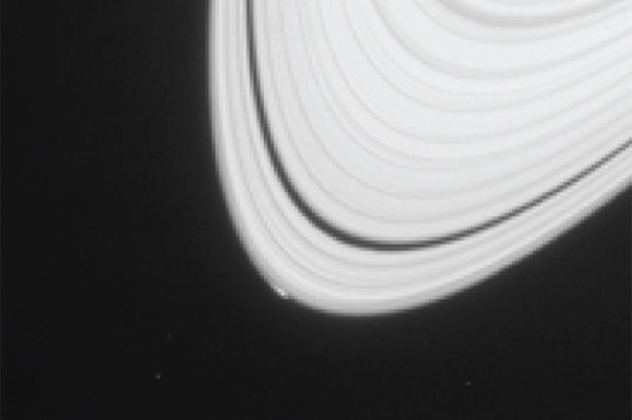
The Cassini spacecraft has taken many beautiful and historic images of Saturn during its mission. Recently, it added to that list when it spotted what appears to be a new moon actually being formed and just emerging from Saturn’s rings. Astronomers have never before witnessed a new moon being born. The new moon, named “Peggy,” is only about .8 kilometers (.5 mi) in diameter and appears to be emerging from the edge of the “A” ring, the outermost of Saturn’s many rings.
Scientists believe that these moons form when icy material in the rings is pushed to the outer edge, sort of like a drop of water pushed to the edge of a spinning disc. Some of these small moons then “shepherd” the rings, keeping the rings in formation with their gravitational pull. Cassini is still too far away to see the new moon clearly, but in 2016 it will pass close enough to get better images.
Patrick Weidinger has been fascinated by all things outer space since, as a child, he experienced the NASA program of the 1960s.

